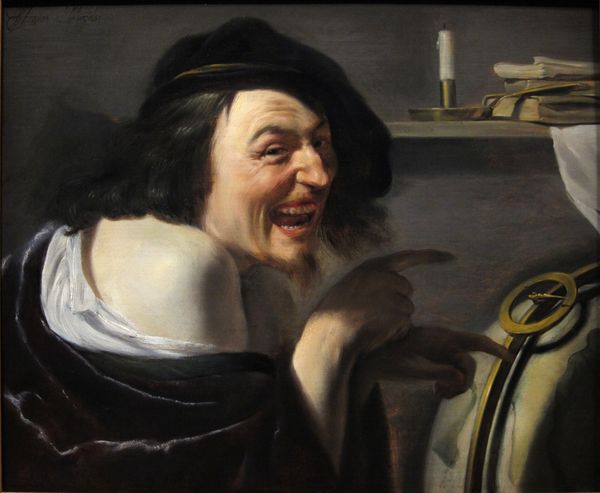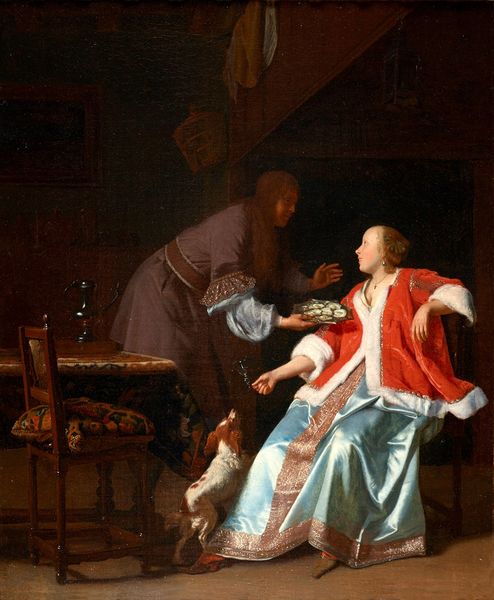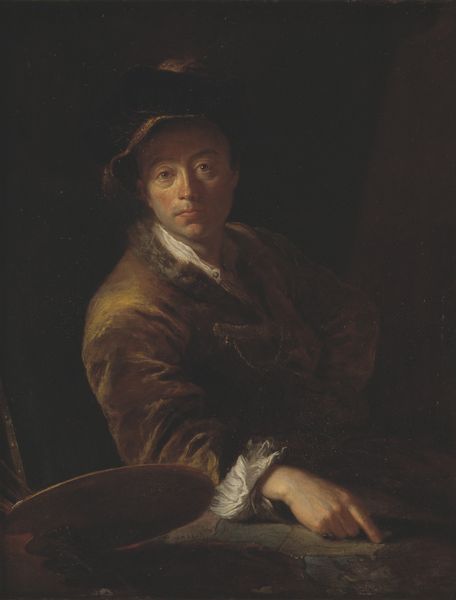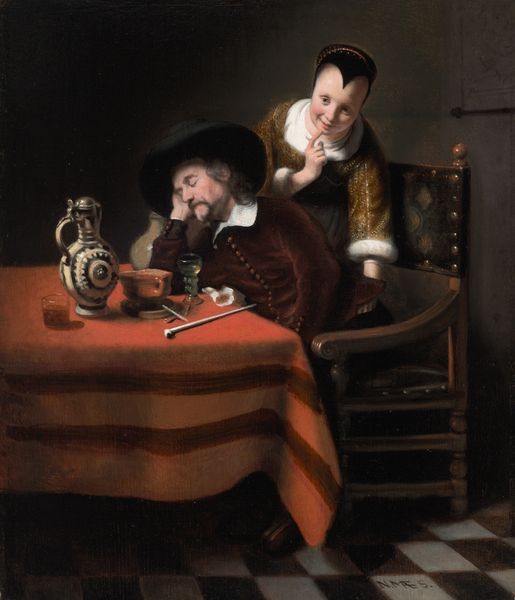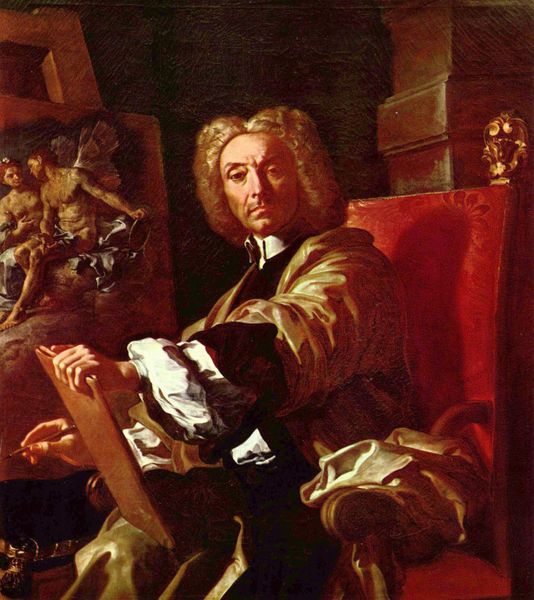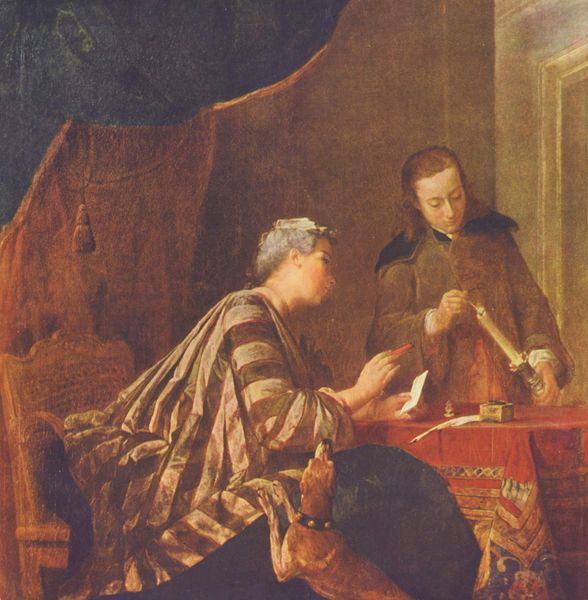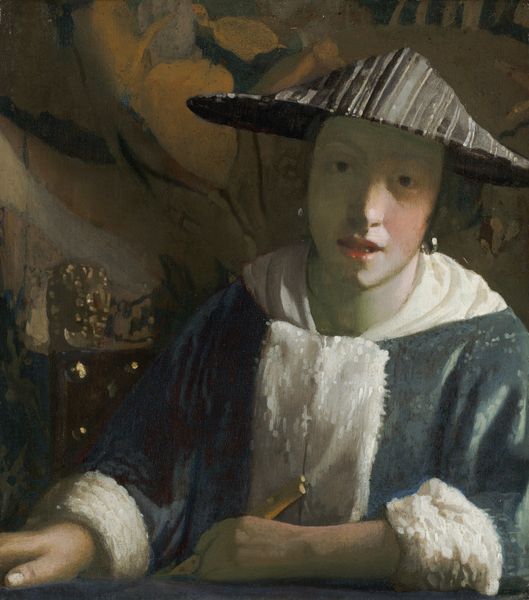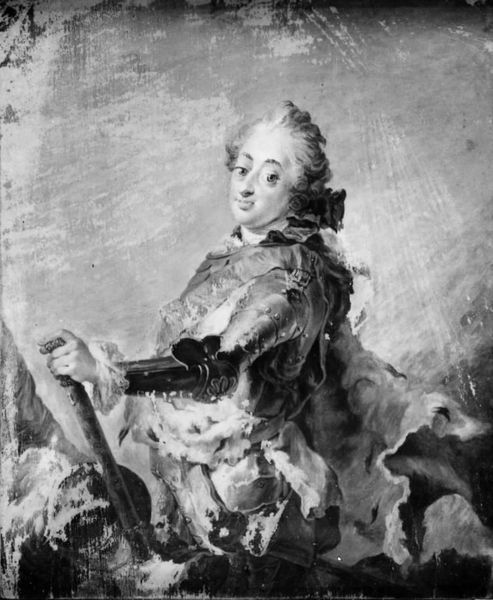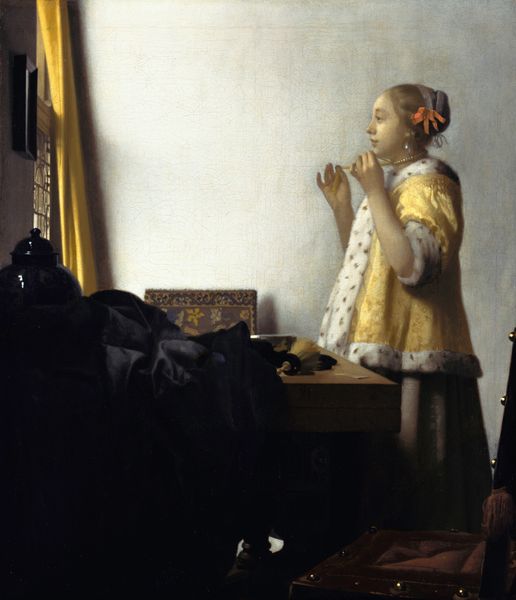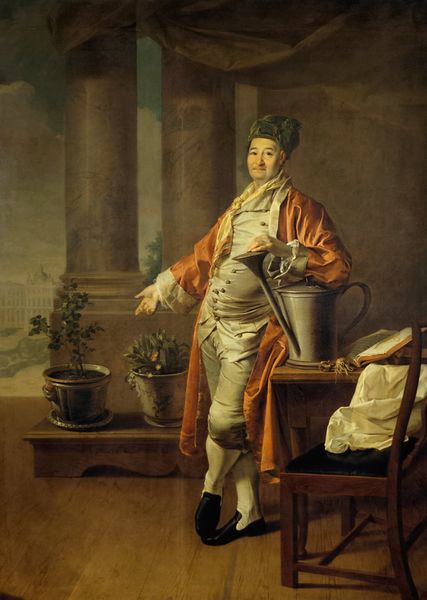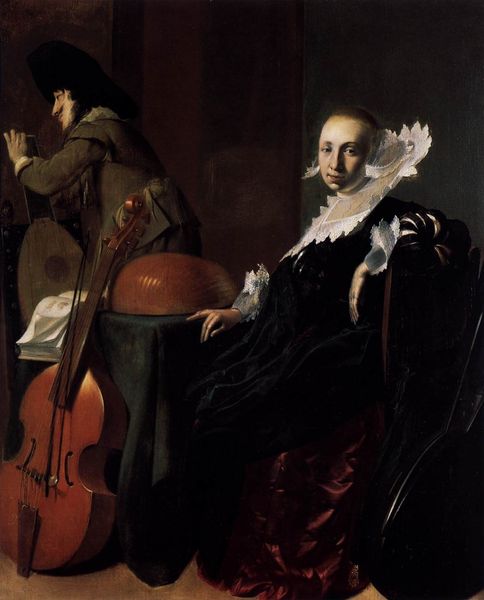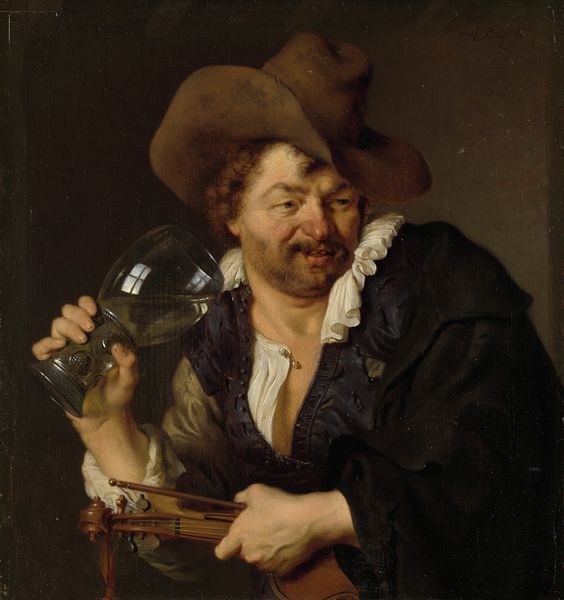
painting, oil-paint
#
portrait
#
self-portrait
#
baroque
#
dutch-golden-age
#
painting
#
oil-paint
Dimensions: 16 x 22.2 cm
Copyright: Public domain
Curator: Here we have Frans van Mieris the Elder's "Man Playing the Theorbo (self-portrait?)," dating from 1676. It's a stunning example of Dutch Golden Age portraiture. Editor: My first thought is the almost unsettling direct gaze, that slight smirk. It definitely holds my attention. The lighting is remarkable too. Curator: Indeed. Notice the detail in the clothing. Consider the textile production, the tailoring, the clear markers of wealth. This wasn't just painting, it was a representation of social status deeply embedded in material culture. Who made the clothing, where did the fabrics come from, what were the labour conditions? Editor: But observe how van Mieris uses the light to define form. The fall of light on the silk sleeves, the highlights that create volume. He's not just rendering material, but actively shaping space and directing our eye. The slightly asymmetric composition also lends dynamism to the piece. Curator: And what about the theorbo itself? Music-making was a social practice. Was he playing for others, or composing alone? Who was his audience, what kind of musical community sustained his craft? Editor: From a purely aesthetic standpoint, the theorbo acts as a counterpoint to the figure's pose. The vertical lines of the instrument, along with the lines in the landscape behind, give a sense of depth, setting off the sitter’s turned gaze and pose. Curator: It is also tempting to interpret the gaze within the Dutch Golden Age's thriving market for art. Mieris's self-promotion, via skilled, laborious self-representation, shows understanding of the art world's material and commercial side. Editor: For me, it's about the artist engaging in a kind of visual dialogue. He uses the language of Baroque art – light, composition, dynamic pose – to communicate with the viewer on an intimate, yet somehow detached level. It transcends its time. Curator: So, perhaps a study in self-fashioning intertwined with the economic realities of being a 17th-century artist? Editor: Yes. In either case, this painting offers a unique look into artistic craftsmanship as a form of visual and material storytelling.
Comments
No comments
Be the first to comment and join the conversation on the ultimate creative platform.
